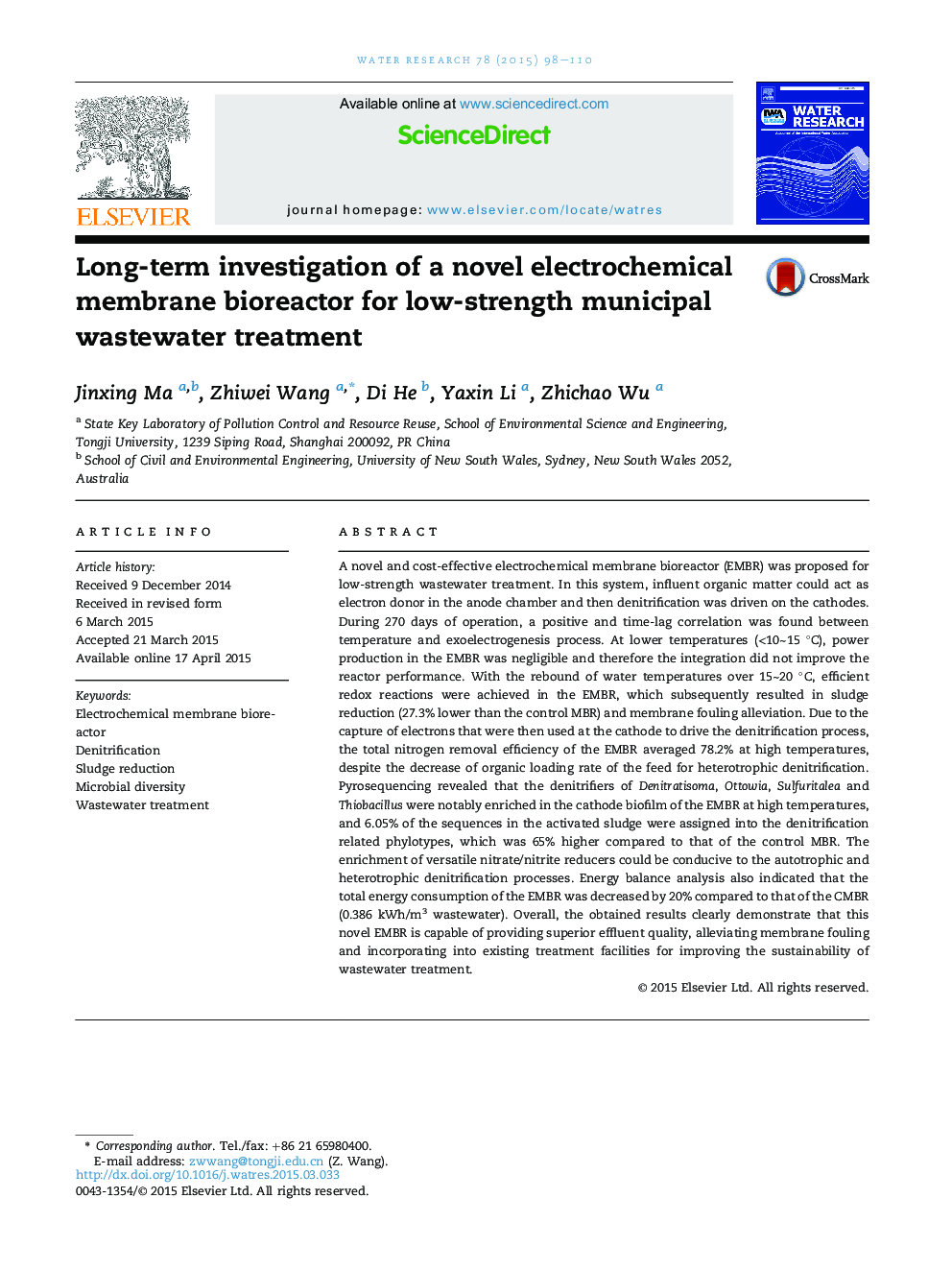| Article ID | Journal | Published Year | Pages | File Type |
|---|---|---|---|---|
| 4481118 | Water Research | 2015 | 13 Pages |
•An EMBR was tested on municipal wastewater for 270 days.•Temperature threshold for performance improvement was about 15 °C.•Sludge reduction and membrane fouling alleviation were achieved at high temperature.•The abundant and diverse denitrifiers contribute to the efficient denitrification.•Integration of electrogenesis process significantly decreases the operating cost.
A novel and cost-effective electrochemical membrane bioreactor (EMBR) was proposed for low-strength wastewater treatment. In this system, influent organic matter could act as electron donor in the anode chamber and then denitrification was driven on the cathodes. During 270 days of operation, a positive and time-lag correlation was found between temperature and exoelectrogenesis process. At lower temperatures (<10∼15 °C), power production in the EMBR was negligible and therefore the integration did not improve the reactor performance. With the rebound of water temperatures over 15∼20 °C, efficient redox reactions were achieved in the EMBR, which subsequently resulted in sludge reduction (27.3% lower than the control MBR) and membrane fouling alleviation. Due to the capture of electrons that were then used at the cathode to drive the denitrification process, the total nitrogen removal efficiency of the EMBR averaged 78.2% at high temperatures, despite the decrease of organic loading rate of the feed for heterotrophic denitrification. Pyrosequencing revealed that the denitrifiers of Denitratisoma, Ottowia, Sulfuritalea and Thiobacillus were notably enriched in the cathode biofilm of the EMBR at high temperatures, and 6.05% of the sequences in the activated sludge were assigned into the denitrification related phylotypes, which was 65% higher compared to that of the control MBR. The enrichment of versatile nitrate/nitrite reducers could be conducive to the autotrophic and heterotrophic denitrification processes. Energy balance analysis also indicated that the total energy consumption of the EMBR was decreased by 20% compared to that of the CMBR (0.386 kWh/m3 wastewater). Overall, the obtained results clearly demonstrate that this novel EMBR is capable of providing superior effluent quality, alleviating membrane fouling and incorporating into existing treatment facilities for improving the sustainability of wastewater treatment.
Graphical abstractFigure optionsDownload full-size imageDownload high-quality image (191 K)Download as PowerPoint slide
